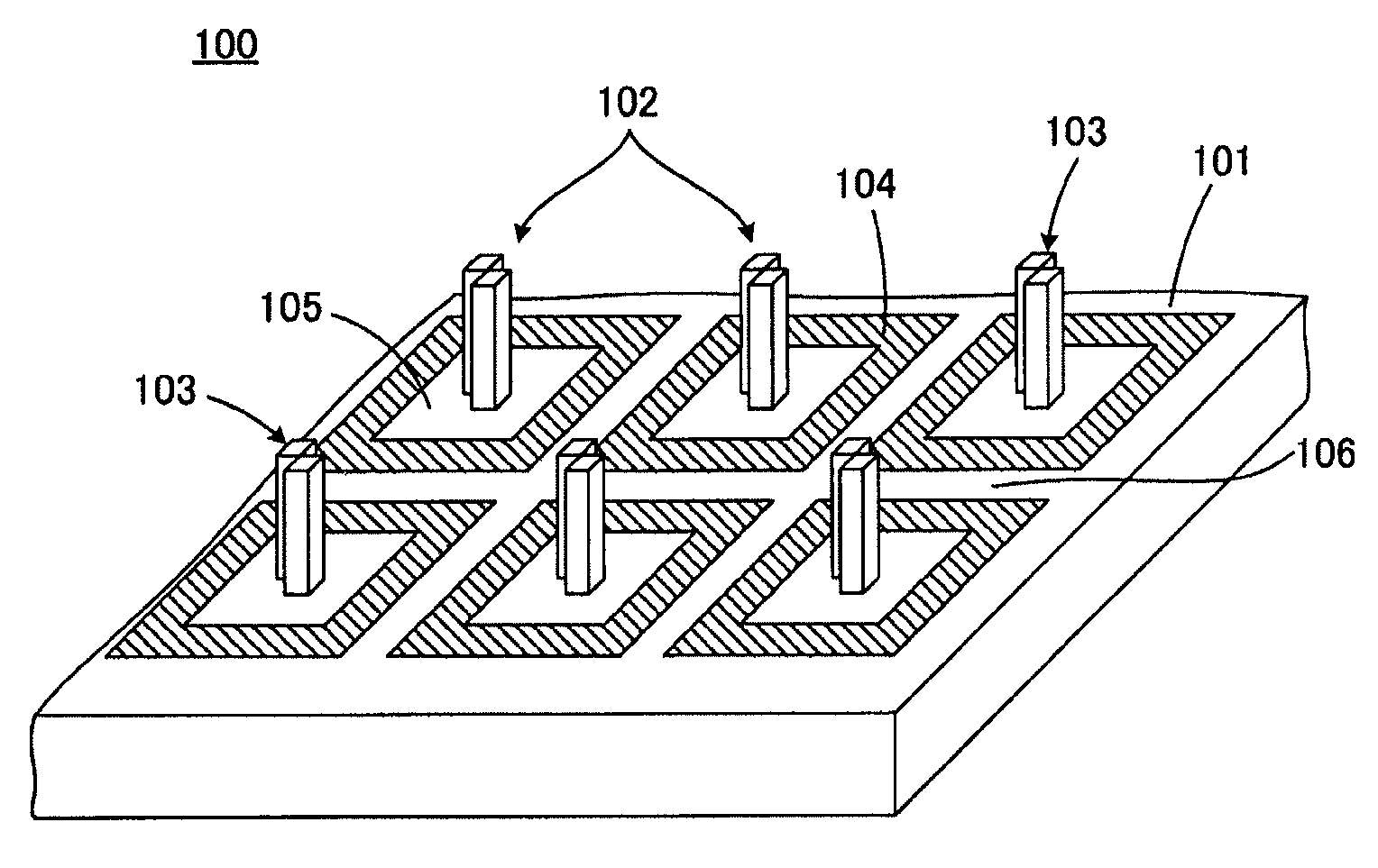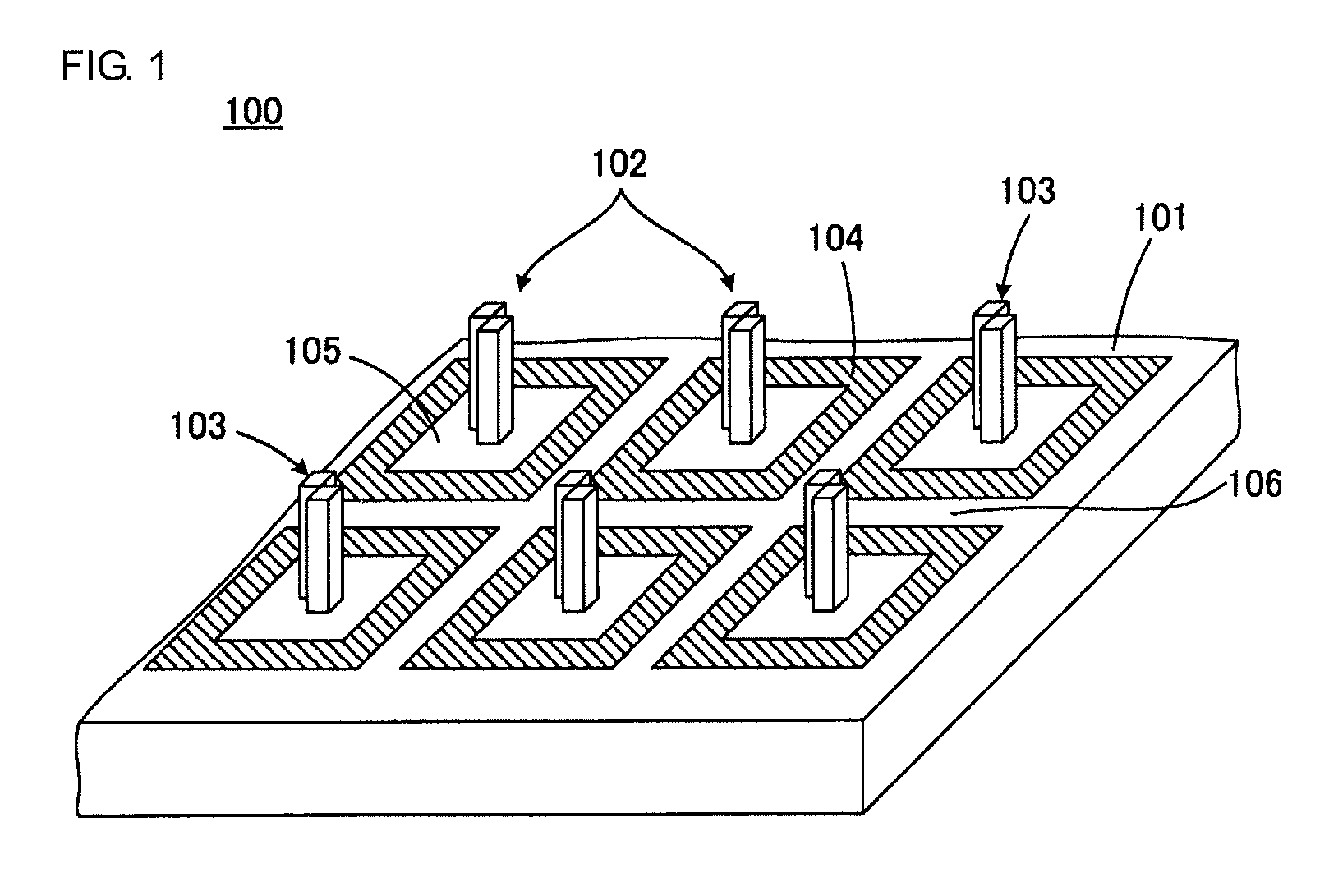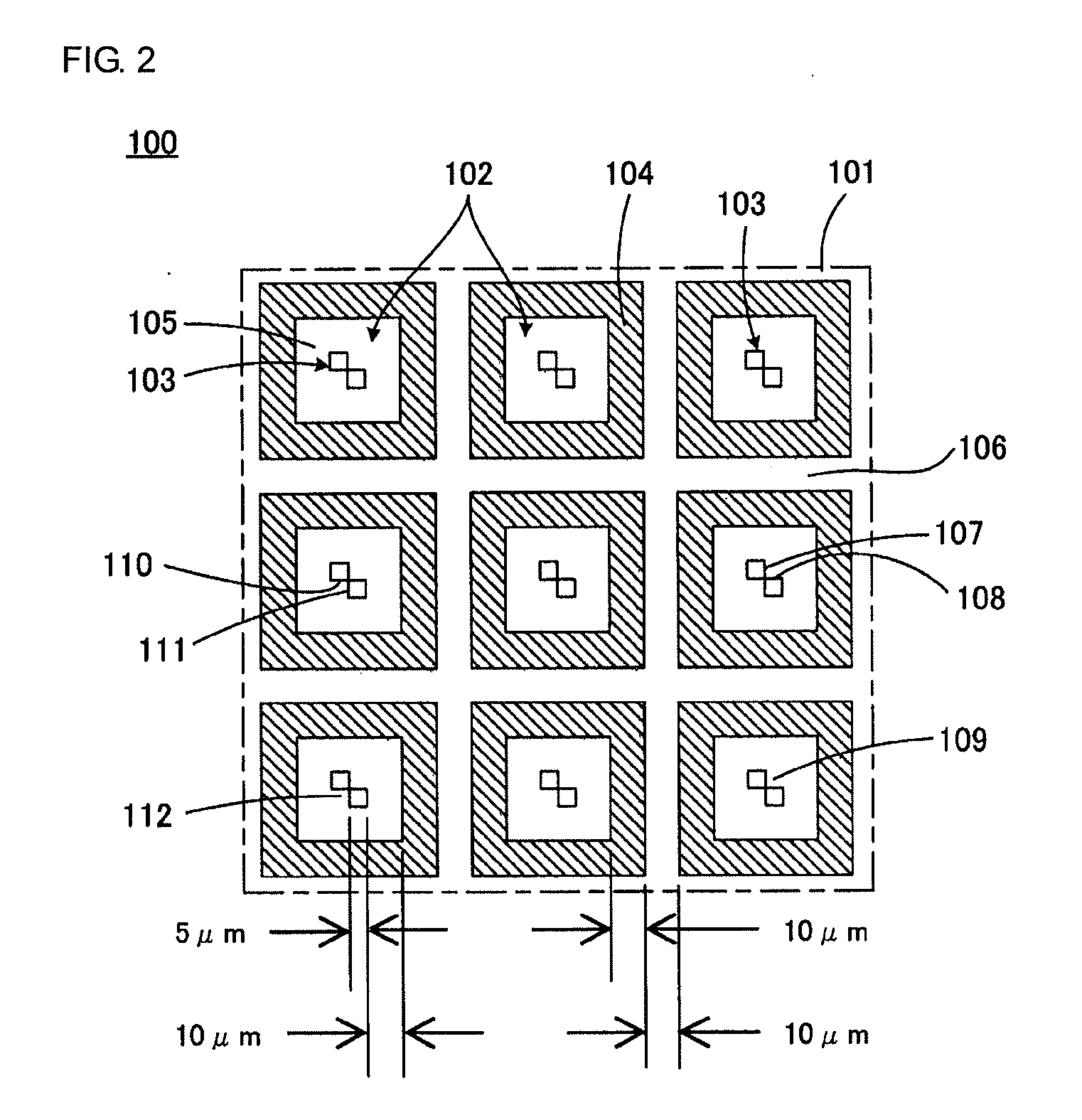Probe-array substrate, probe array, and method of producing the same
a technology applied in the field of probe array and substrate probe array, can solve the problems of substrate defective as probe array, cost or production speed sacrifice, etc., and achieve the effects of low cost, low cost, and efficient production of probe array
- Summary
- Abstract
- Description
- Claims
- Application Information
AI Technical Summary
Benefits of technology
Problems solved by technology
Method used
Image
Examples
first embodiment
[0047]FIG. 1 illustrates in part of a probe-array substrate 100 according to the present invention in perspective view. FIG. 2 is a top view of a part of the probe-array substrate 100 shown in FIG. 1.
[0048]Referring to FIGS. 1 and 2, the probe-array substrate 100 includes a main surface 101 and is substantially planar as a whole. A plurality of probe holding units 102 are arranged in a matrix on the probe-array substrate 100.
[0049]Each of the probe holding units 102 includes a hydrophilic projection 103. The terms “hydrophilic” and “hydrophobic” are usually used as terms indicating the presence or absence of wettability (affinity) for water. In the following description, however, regardless of whether a probe solution is an aqueous solution, when wettability for a probe solution is high, the state is represented as “hydrophilic,” and when wettability therefor is low, the state is represented as “hydrophobic.”
[0050]Each of the probe holding units 102 is surrounded by a hydrophobic re...
second embodiment
[0116]FIG. 11 is an illustration for use in describing the present invention and corresponds to FIG. 2. In FIG. 11, similar reference numerals are used in the elements corresponding to those illustrated in FIG. 2, and the redundant description is omitted.
[0117]In a probe-array substrate 100a illustrated in FIG. 11, the hydrophilic region 105 forming a portion of the probe holding unit 102 and the inspection region 106 are coupled with a hydrophilic region 114 having a narrow width. The narrow hydrophilic region 114 is disposed therebetween and extends across the hydrophobic region 104. Even in this embodiment, if the width of the narrow hydrophilic region 114 is sufficiently small, a probe solution properly introduced in the probe holding unit 102 does not flow into the inspection region 106 through the narrow hydrophilic region 114. This is because when the probe solution is moving in the narrow hydrophilic region 114, if the width of the narrow hydrophilic region 114 is sufficient...
third embodiment
[0119]FIG. 12 is an illustration for use in describing the present invention and corresponds to FIG. 1. In FIG. 12, the same or similar reference numerals are used in the elements corresponding to those illustrated in FIG. 1, and the redundant description is omitted.
[0120]In a probe-array substrate 100b illustrated in FIG. 12, the probe holding unit 102 is provided by the projection 103 alone. Accordingly, the hydrophobic region 104 is the portion other than the portion where the projection 103 on the main surface 101 of the probe-array substrate 100b. The projection 103 projects from the hydrophobic region 104.
[0121]To produce the probe-array substrate 100b through the steps illustrated in FIGS. 3A to 3C described above, after the projection 103 is formed on the material board 120, liquid resin is applied on the material board, a resin film is formed by spin coating, and then the resin film is cured. At this time, the thickness of the resin film formed on the top surface and the si...
PUM
 Login to View More
Login to View More Abstract
Description
Claims
Application Information
 Login to View More
Login to View More - R&D
- Intellectual Property
- Life Sciences
- Materials
- Tech Scout
- Unparalleled Data Quality
- Higher Quality Content
- 60% Fewer Hallucinations
Browse by: Latest US Patents, China's latest patents, Technical Efficacy Thesaurus, Application Domain, Technology Topic, Popular Technical Reports.
© 2025 PatSnap. All rights reserved.Legal|Privacy policy|Modern Slavery Act Transparency Statement|Sitemap|About US| Contact US: help@patsnap.com



